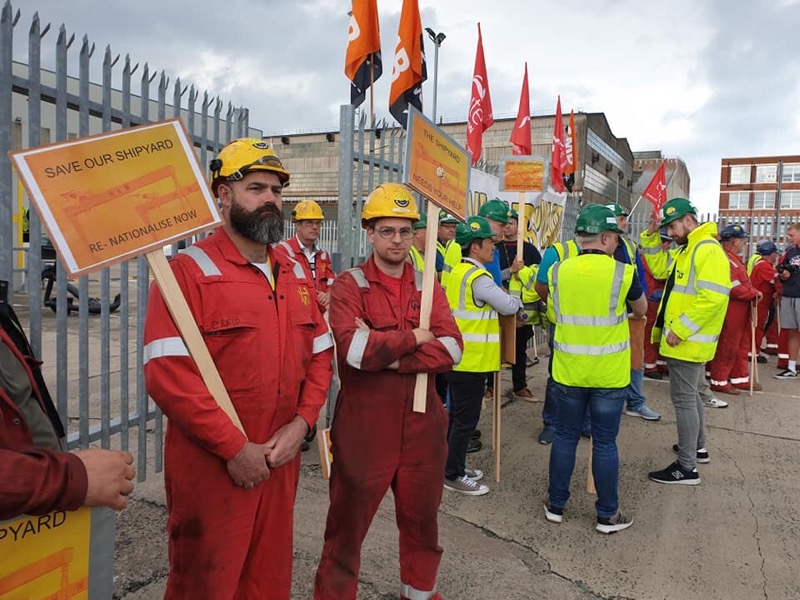Workers Seize the Shipyard That Built the Titanic, Plan to Make Renewable Energy There
Late last month, 130 ship builders, steel workers, welders, and riveters seized control of the storied Belfast shipyard that built the Titanic in 1909. More than two weeks later, they're still there, and say they won't be leaving until the docks are nationalized and are used to produce renewable energy infrastructure.
The docks had moved to shut down after their troubled Norwegian parent company, Dolphin Drilling, failed to find a buyer, but militant workers have refused to relinquish the site, including its two towering yellow cranes, known as Sampson and Goliath—landmarks that dominate the Belfast skyline.
The closure of the shipyard, once an emblem of Britain’s industrial power with over 30,000 workers, would mark the end of centuries of shipbuilding in the city. But workers from Harland & Wolff are demanding that British Prime Minister Boris Johnson nationalize the shipyards and create new jobs in renewable energy there.
“I was there yesterday. These workers are going to sit there until they get a result,” a spokesperson for Unite, which represents Harland & Woolf workers, told Motherboard. “There’s massive potential in wind turbines and tidal energy. They’re saying they could create thousands of jobs, and that we need a just transition to renewable energy.”
Some activists involved in the occupation have cited Alexandria Ocasio-Cortez and the Green New Deal as their inspiration. In recent years, the workers at Harland & Wolff have built parts for wind turbines. They argue that renewable energy jobs would serve not only as a sustainable solution, but also a practical one because of their skill set.

The steelworkers—now in their 17th day of protest—have blocked insolvency practitioners, known in the United Kingdom as “administrators,” from entering the site, with around 20 to 30 workers occupying around the clock. “No one moves onto that site or off that site unless the workers who are running that site agree to it,” a union official told the media. “No administrator will drive into that workplace unless the gate is opened by workers.”
This week, the Scottish government announced that it “ready and willing” to nationalize a shipyard near Glasgow where 350 jobs are at risk. This could bode well for the Harland & Wolff workers in Belfast. Dolphin Drilling did not respond to a request for comment.
Gerry Carroll, an outspoken member of Northern Ireland’s parliament from Ireland’s socialist party, People Before Profits, has teamed up with local unions to call for green energy jobs at Harland & Wolff. Carroll says the Belfast docks have a long history of labor strikes and worker purges, dating back to the 1910s and into the 1990s, during the Northern Ireland Conflict. “Catholics have been forced out of jobs... There’s a poisonous history of anti-communism,” Carroll told Motherboard. “We fully support the workers and their occupation and fight."



Spread the word